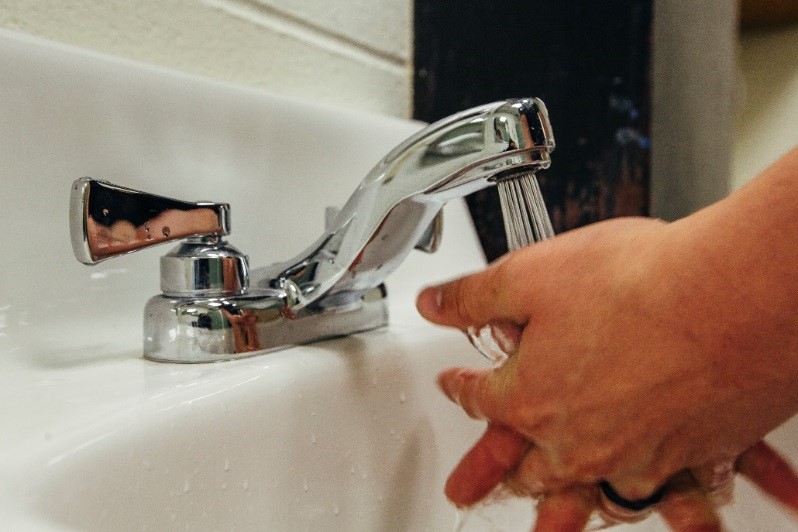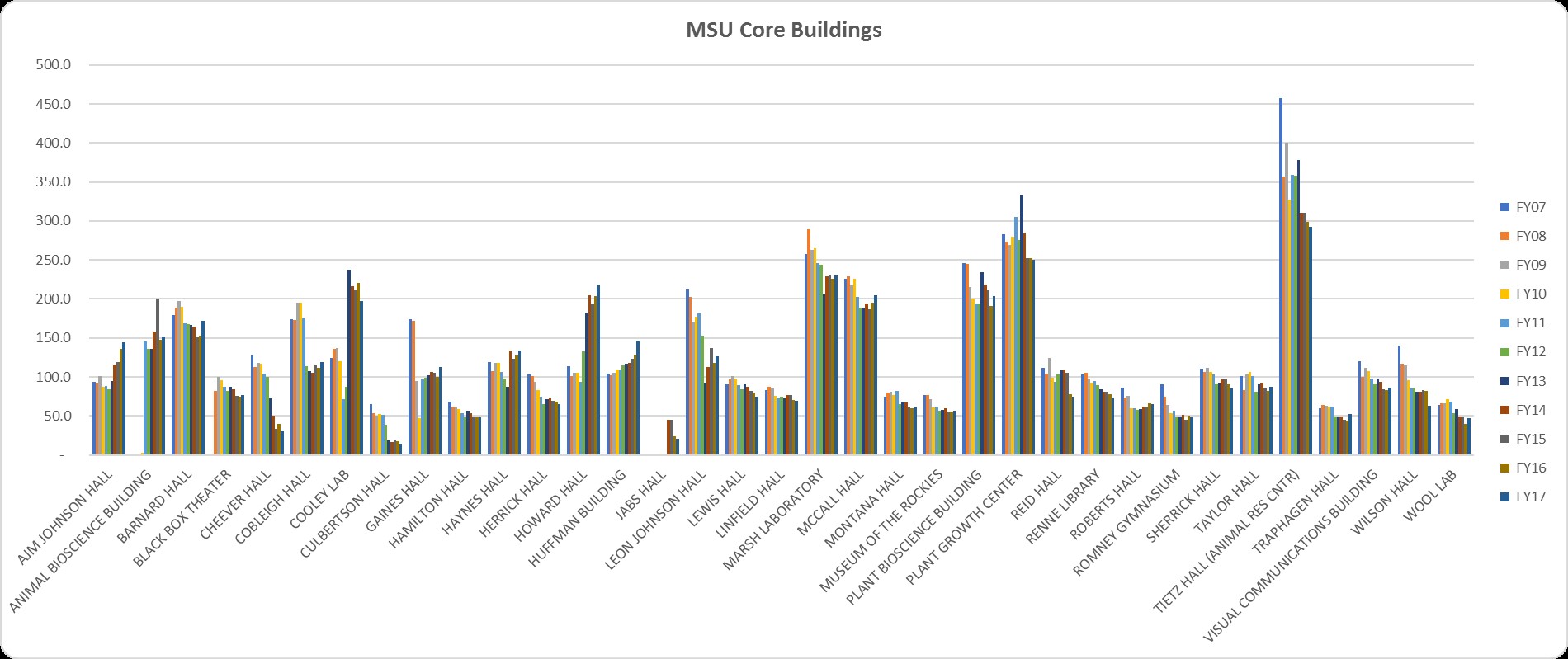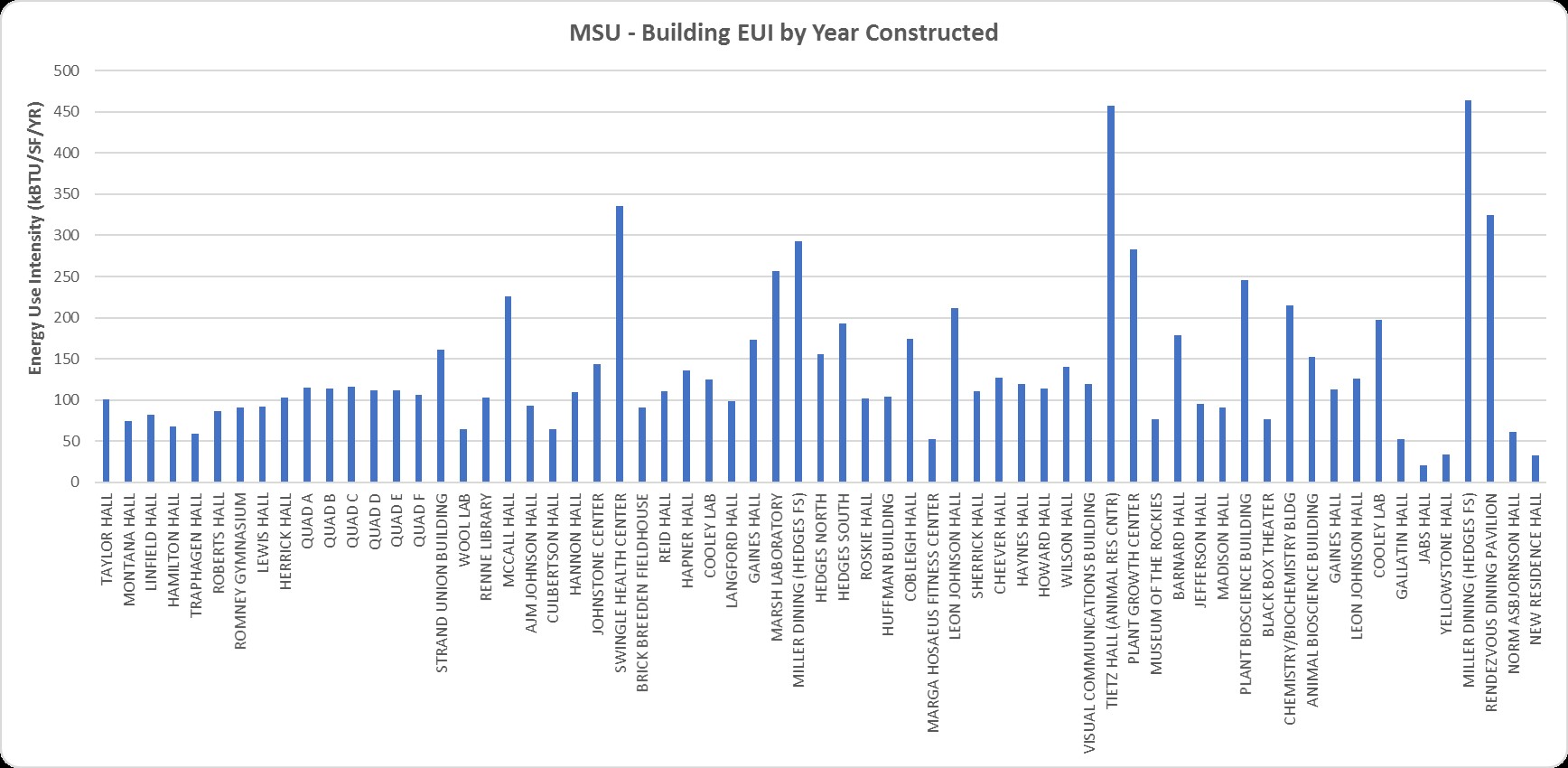Resource Management

Overview
University Facilities Management is committed to responsible stewardship of natural
resources. Resource Management and Engineering staff are leaders in campus resource
conservation efforts, designing and executing engineering projects that reduce energy
use and environmental impacts.
The Engineering & Utilities department is a strong partner with the MSU Office of Sustainability:
Ground source bore holes (500 to 700 feet deep) are used in combination with efficient heat pump technology in the Norm Asbjornson Hall, Jabs Hall, Leon Johnson Hall, Wilson Hall, Tietz Hall, American Indian Hall and Romney Hall. This technology will also be used in the new MSU Wellness Center.
MSU water savings projects have reduced water use on campus by approximately 26 million gallons per year resulting in savings of over $180,000 each year.
MSU has replaced approximately 1000 outdoor lights with highly efficient LED fixtures. The new LED lights save approximately $100,000 per year.
Transpired solar collectors (solar walls) are used on Cooley Laboratory, Jabs Hall, Yellowstone Hall, Rendezvous Dining, Norm Asbjornson Hall and Romney Hall. These collectors capture solar energy and are used to preheat fresh air for the buildings.
Norm Asbjornson Hall has 214 KW of photovoltaics (solar electricity). The solar panels on Norm Asbjornson Hall provide approximately 20 percent of the electricity used by the building. Photovoltaics are also located on the American Indian Hall and are planned for the Wellness Center.
Solar thermal (hot water) panels are located on Gallatin Hall and contribute to the heating for the building.
MSU is implementing a comprehensive energy accounting system to manage the nearly 500 electric, natural gas, steam and water meters campus wide. This system will facilitate energy management and savings efforts across campus.
A heat recovery ventilation system in North Hedges Hall saves approximately $90,000 per year in natural gas heating costs.
MSU spends approximately $8M annually for energy and utility services including electricity, natural gas, water and sewer. In 2006, MSU negotiated a 15-year power supply contract with the Western Area Power Administration for hydroelectric power resources. Today this accounts for approximately 30% of the campus purchased electricity. Approximately 70% of the electricity MSU uses comes from renewable resources including wind and hydropower.
MSU has worked aggressively to lower its energy usage over the past 10 years. Even with dramatically rising enrollment, these initiatives have successfully lowered MSU’s energy consumption. Campus greenhouse gas emissions have decreased 17% since 2008, with a 32% increase in campus population and a 9% increase in gross square footage over the same period. Electricity use per square foot of building area is 3% below 2006 levels. Natural gas use has been reduced 20% per square foot over a ten-year period from 2006 to 2015.
Total potable water use has decreased 31% per square foot and 42% per person since 2006, despite significant growth in population and buildings. Water efficiency projects and transitioning irrigation needs to non-potable water supplies are the main contributors to the decrease. As an example, replacing faucets and showerheads in three residence halls has resulted in documented savings of over 5 million gallons of water per year. This project alone saves $55,000 per year in energy and water costs.
MSU has approximately 500 meters and submeters across campus for electricity, steam condensate, natural gas and domestic water. Campus meter type and manufacturer vary by installation. Monthly campus meter data is collected by hand, by smart meters or received from Utility providers. The metering information helps Resource Management and Engineering staff review energy use trends, identify anomalies and address system failures.
MSU has implemented a campus smart metering system to enable real-time energy use monitoring and the collection of interval data. Smart metering efforts are primarily focused on electricity, but in some cases steam condensate, natural gas and domestic water information are also collected by the system. There are approximately 50 smart meters installed throughout campus with plans to install additional meters for buildings with the highest energy use.
MSU continues to make strides in building energy use reductions. The building Energy Use Intensity (EUI) trends shown below confirm that energy reductions are occurring in academic buildings due to energy efficiency projects. Resource Management and Engineering staff identify energy reduction opportunities by comparing the EUI and other energy data for facilities with similar characteristics.

MSU is committed to lowering energy use in new construction and major renovations. The last seven buildings constructed at MSU are the most efficient ever built on campus. The Norm Asbjornson Hall (academic), Jake Jabs Hall (academic), Gallatin Hall (residence), Yellowstone Hall (residence) and the New Residence Hall all achieve an Energy Use Intenisity (EUI) below 50 kBTU/SF/year. This is approaching net-zero attainable.
The Miller Dining Pavilion renovation was completed in 2015, reducing the energy use per meal by 20%. In addition, the renovation significantly increased building comfort and dining choices. The Rendezvous Dining Pavilion opening in Fall 2018 is projected to be 30% more efficient than the Miller Dining Pavilion.

